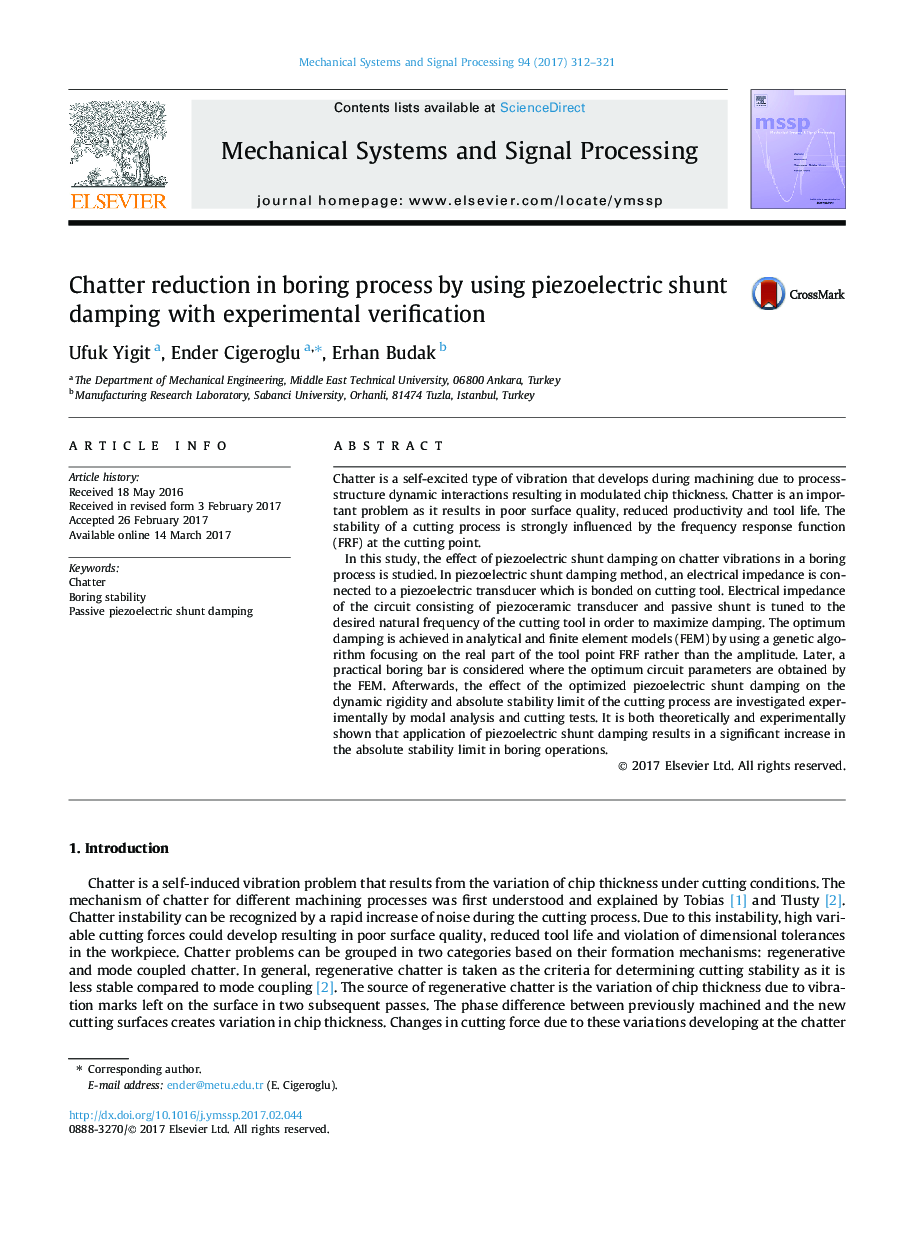| Article ID | Journal | Published Year | Pages | File Type |
|---|---|---|---|---|
| 4976942 | Mechanical Systems and Signal Processing | 2017 | 10 Pages |
â¢Effect of piezoelectric shunt damping in boring process is studied.â¢Real part of tool point FRF is used to determine the optimum circuit parameters.â¢Continuous beam model is used to narrow down the optimization domain.â¢FEM of the tool is used to determine the final optimum circuit parameters.â¢Modal & cutting tests showed significant increase in the absolute stability limit in boring.
Chatter is a self-excited type of vibration that develops during machining due to process-structure dynamic interactions resulting in modulated chip thickness. Chatter is an important problem as it results in poor surface quality, reduced productivity and tool life. The stability of a cutting process is strongly influenced by the frequency response function (FRF) at the cutting point.In this study, the effect of piezoelectric shunt damping on chatter vibrations in a boring process is studied. In piezoelectric shunt damping method, an electrical impedance is connected to a piezoelectric transducer which is bonded on cutting tool. Electrical impedance of the circuit consisting of piezoceramic transducer and passive shunt is tuned to the desired natural frequency of the cutting tool in order to maximize damping. The optimum damping is achieved in analytical and finite element models (FEM) by using a genetic algorithm focusing on the real part of the tool point FRF rather than the amplitude. Later, a practical boring bar is considered where the optimum circuit parameters are obtained by the FEM. Afterwards, the effect of the optimized piezoelectric shunt damping on the dynamic rigidity and absolute stability limit of the cutting process are investigated experimentally by modal analysis and cutting tests. It is both theoretically and experimentally shown that application of piezoelectric shunt damping results in a significant increase in the absolute stability limit in boring operations.
